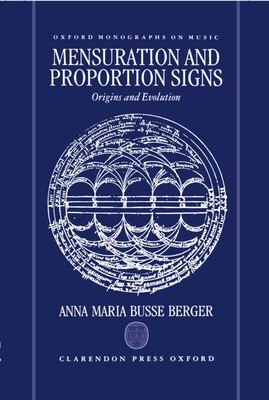
- We will send in 10–14 business days.
- Author: Anna Maria Busse Berger
- Publisher: Clarendon Press
- ISBN-10: 0198162308
- ISBN-13: 9780198162308
- Format: 16.3 x 24.3 x 2.3 cm, hardcover
- Language: English
- SAVE -10% with code: EXTRA
Reviews
Description
In the fourteenth century composers and theorists invented mensuration and proportion signs that allowed them increased flexibility and precision in notating a wide range of rhythmic and metric relationships. The origin and interpretation of these signs is one of the least understood and most complex issues in music history. This study represents the first attempt to see the origin of musical mensuration and proportion signs in the context of other measuring systems of the fourteenth century. Berger analyzes the exact meaning of every mensuration and proportion sign in music and theory from the fourteenth to the sixteenth century, and offers revisions of many currently-held views concerning the significance and development of early time signatures.
EXTRA 10 % discount with code: EXTRA
The promotion ends in 18d.14:26:53
The discount code is valid when purchasing from 10 €. Discounts do not stack.
- Author: Anna Maria Busse Berger
- Publisher: Clarendon Press
- ISBN-10: 0198162308
- ISBN-13: 9780198162308
- Format: 16.3 x 24.3 x 2.3 cm, hardcover
- Language: English English
In the fourteenth century composers and theorists invented mensuration and proportion signs that allowed them increased flexibility and precision in notating a wide range of rhythmic and metric relationships. The origin and interpretation of these signs is one of the least understood and most complex issues in music history. This study represents the first attempt to see the origin of musical mensuration and proportion signs in the context of other measuring systems of the fourteenth century. Berger analyzes the exact meaning of every mensuration and proportion sign in music and theory from the fourteenth to the sixteenth century, and offers revisions of many currently-held views concerning the significance and development of early time signatures.


Reviews